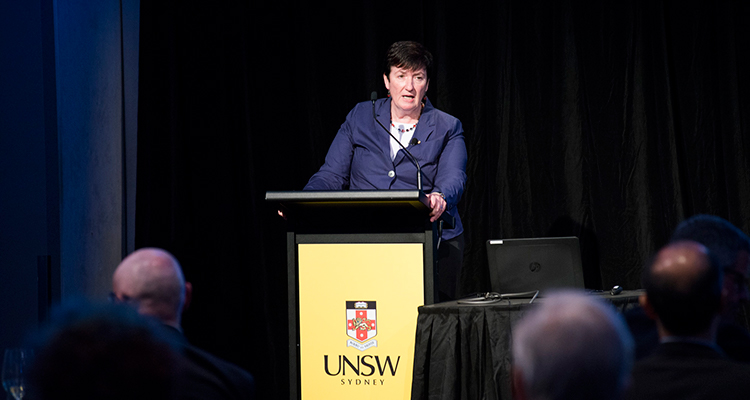
In a panel discussion at UNSW, Australian university and business leaders discussed how higher education institutions can keep pace with the demands of modern workplaces.
The future success of the Australian workforce will depend on workers’ ability to embrace and adapt to change. That success hinges on the country’s post-secondary education system, business and education leaders agreed during a recent event at UNSW Sydney.
Jennifer Westacott, Chief Executive of the Business Council of Australia (BCA) and keynote speaker on the evening, highlighted the BCA’s vision for post-secondary education. The BCA has taken an active interest in Australia’s post-secondary education system and skills program. Last year, the BCA released its paper ‘Future Proof: Protecting Australians through education and skills’. The report is a renewed call for reforms to create an integrated higher education system that bridges the often-divided university sector with vocational education and training (VET).
BCA’s paper calls for a post-secondary and skills system that maintains the unique characteristics of each sector, but stresses that a shared governance model overseeing VET and universities is required. This includes a single source platform for information and a single funding model.
“These two sectors impact on each other. They need to work as one system to ensure both can thrive,” said Ms Westacott, a UNSW alumna and adjunct professor in the City Futures Research Centre in the Faculty of Built Environment. “What we are trying to do is build an internationally envied post-secondary education sector in this country.”
Central to the funding model is a lifelong skills account that undergraduates and workers could use to complete a qualification or training in either sector to upskill or reskill. Westacott said the model would enable learners to choose flexible study options to help them capitalise on and move with a fast-changing world.
“To keep people working and to keep jobs in Australia, we need to embrace the change within our jobs and be ready to adapt. Resisting task change will leave us vulnerable,” said Ms Westacott.
“Our post-secondary system needs to be ready to move beyond the school-to-work transition and support workers through the transitions they’ll encounter across their working lives,” she continued.
Furthermore, Westacott put forth a shared governance model between the Commonwealth and the States that stops the ongoing arguments about oversight and responsibility. As a starting point, the BCA proposes a costing exercise to determine the true cost of delivering the current system, which is the root cause of many problems between the levels of government.
“We spend $20 billion each year, but we don’t really know what it costs to deliver this system,” said Ms Westacott.
UNSW President and Vice-Chancellor Professor Ian Jacobs joined Ms Westacott for a panel discussion following her address. Professor Jacobs, who agreed with Ms Westacott’s arguments for an integrated post-secondary education system, said the conversation opened an opportunity for the sectors to move forward but said he would broach the issue from a different point.
“We need to be asking the question, what does Australia need from the post-secondary system in order to deliver all of the things we want for the nation?” Professor Jacobs said. “That includes a skilled workforce, it includes economic benefit, includes thoughtful, mutually tolerant people. That is what a great education system can provide.”
- Log in to post comments
